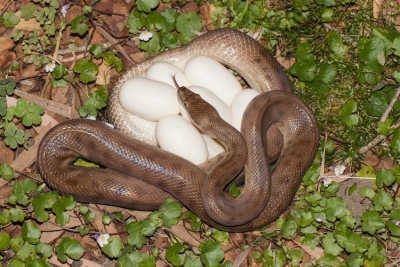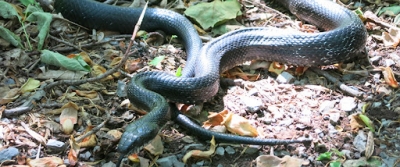What are egg-laying snakes are called?

Snakes that lay their eggs outside of their bodies are known as oviparous. Those that retain them are called ovoviviparous. Ovoviviparous snakes appear to give birth to live young, but they actually don't -- although there are those who do, known as viviparous snakes.
While ovoviviparous snakes lay eggs, just like their oviparous counterparts, the mother snake simply keeps those eggs within her body while they incubate. Usually ovoviviparous species, such as some garter snakes and pit vipers, live in cooler climates where it would be harder for the mother snake to properly brood the eggs to keep them warm enough to hatch. By keeping them inside, she can maintain them at a comfortable temperature. Unlike viviparous species, there is no transfer of fluids between mother and babies, because they each feed on the substances contained in their individual eggs. Babies emerge from the mother when they hatch from their eggs, giving them the appearance of "live" births.
Picture Credit : Google
